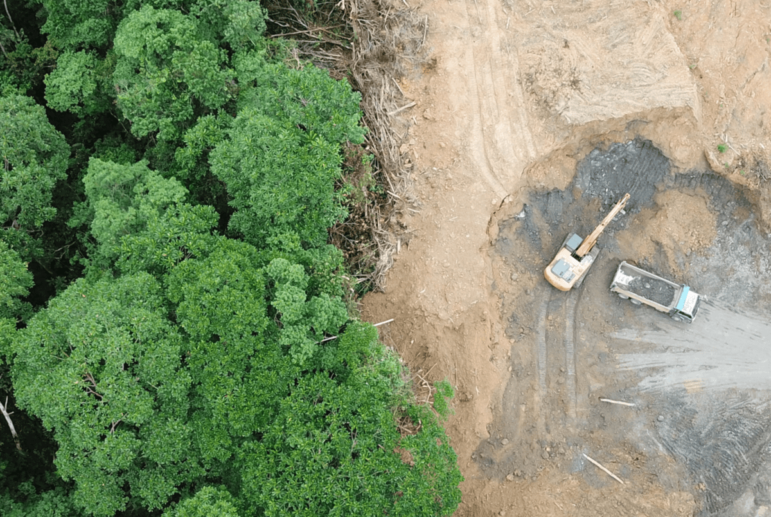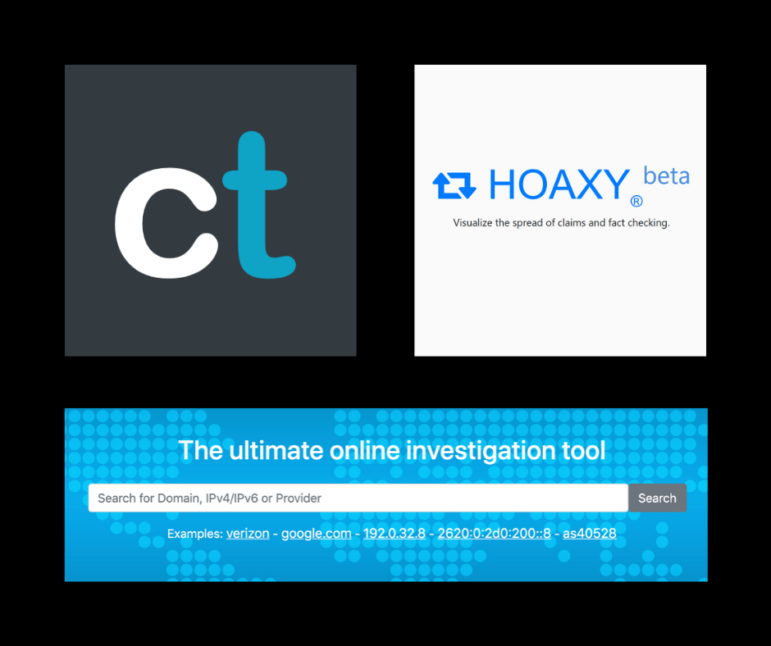

My Favorite Tools with Pulitzer-Winning Reporter Martha Mendoza
Read this article in
For our series on journalists’ favorite tools, we asked Martha Mendoza — a two-time Pulitzer Prize-winning reporter — about what she uses to probe supply chains.
An investigative journalist with The Associated Press, Mendoza was part of a team that exposed forced labor in the fishing industry in Southeast Asia in 2015, an exposé which helped to free 2,000 slaves (and brought her second Pulitzer Prize). In 2018, she helped to expose the plight of immigrant children forcibly removed from their parents at the border between the United States and Mexico. Back in 2000, her team uncovered a massacre of civilians by US soldiers during the Korean War (earning her first Pulitzer).
This year, Mendoza has adapted methodologies she developed on previous stories to track supply chains involved with medicine and equipment tied to the global COVID-19 response.
She shared insights on tracking drugs and equipment during the pandemic during a webinar on supply chains — the ninth in GIJN’s series on Investigating the Pandemic — and in a follow-up interview.
In March, Mendoza and her colleague Juliet Linderman exposed critical shortages in personal protective equipment (PPE) in the US, and published a story revealing that shipments of items like N95 masks and medical swabs needed by staff treating patients with the coronavirus had plummeted — rather than risen — compared to the same period in previous years.
In May, they revealed that counterfeit N95 masks — which are important for infection control because they filter out 95% of all airborne particles — had not only infiltrated US supply chains, but that they had reached frontline health professionals, putting their lives at risk.
Mendoza had noticed warehouse workers pulling at ear loops on the imported masks, and recalled a warning from the US Centers for Disease Control that faulty ear loops could be a sign of counterfeit masks.
She said she wants reporters “to think about whose supply chains are broken where [they] are, to exemplify how fractured supply chains definitely have consequences.”
Mendoza said journalists should also think about the knock-on effects of shortages. For instance, she said the lack of PPE in US hospitals had caused nurses to move intravenous fluid racks outside treatment rooms, so they wouldn’t have to gown-up to change patients’ fluid bags. This, in turn, caused much more IV tubing to be used, which then caused a secondary shortage, of tubing.
“The factories that make this stuff are not close to ramping up, and, here in the US, some are refusing to,” she said. “Because, if they do, it’s very expensive, and then when there’s an end to this COVID-19, then they could potentially go bankrupt if they’ve got their production lines up and their staff up on these products that are no longer in need. So there’s a lot to look at.”
Mendoza said the ultimate asset for all investigative reporters was their journalistic credibility — something that needed special protection during the pandemic: “All we have is our credibility as journalists, and there are so many forces at work to challenge that credibility, so we have to be getting it right.
“There is so much misinformation going on. If you do nothing, OK, but don’t get it wrong. You have got to have your colleagues check you at every step of the way. And there was never a more important time to be presenting accurate information.”
Here are her favorite tools for digging into supply chains.
Panjiva and ImportGenius
“When this crisis first hit, there were not [enough] masks, surgical gowns, hand sanitizers, or swabs available, and I turned to my favorite data sources: ImportGenius and Panjiva.” (Import Genius and Panjiva are commercial databases with records on international trade.)
“Early on, I went to the big associations and asked them for information about shortages. Nurses unions and organizations of emergency room doctors are useful.
“On January 15, when [we first learned that] COVID-19 [had] hit Wuhan, I went into Panjiva and looked at which American suppliers were receiving goods from Wuhan, and I contacted them, including a medical supplier, to see how this was impacting their imports. I now have weekly conversations with that medical supplier, as well as hospital procurement officers.
“For us tracking medical supplies, it became obvious early on — certainly in the US — that there weren’t enough. Nurses in hospital COVID wards were being given garbage bags to cut and tie and put on.
“I don’t have paid subscriptions to ImportGenius or Panjiva. But ImportGenius is particularly generous when it comes to journalists, so if you simply go to their contact form, or if you [get an introduction], they have been known to provide accounts. It’s the same with Panjiva, though it’s important to mention them as your source for the data.
“In mid-March, I [searched for] how many shipments of N95s, surgical gowns, hand sanitizers, and swabs were imported into the US between February 15 and March 15 in 2020, and for the same month window in 2019, so I could compare year over year. That’s when I began to see we were having a massive supply chain problem.
“Swabs have become the picture of the virus, because without swabs you can’t test, and without testing you can’t contain.
“Rubber gloves [stock] also plummeted, and gloves are their own unique supply chain issue, because there has been a lot of labor abuse in the history of rubber gloves, particularly in Thailand and Malaysia.”
Digging into the FPDS
“Another big source of information is the US Federal Procurement Data System (FPDS). With this website, we can track what the US government is buying. I know [reporters] in some countries have this [kind of data] more easily, some more difficult.
“But FPDS has created a COVID-19 code in their Excel database, and you can see what the government is spending … This ranges from peanut butter for federal prisoners to organists for funerals for the Veterans Administration, to big contracts for COVID support overseas.
“Through this, I was able to see what masks and swabs the US government was buying, and when it was buying these materials to prepare itself after having learned through the World Health Organization and China that this pandemic was coming. And I was able to show that the US was late to the party.
“There are a few places to get good COVID data. The Associated Press has been leaning on Johns Hopkins, but there are now about 15 different sources that all have similar numbers on what happened in the last 24 hours, as well as projections, and those are great numbers to lean on.”
Trint Digital Transcription Tool
“Digital transcription services are especially useful during the coronavirus [pandemic], because we are really collaborating more than ever, and because, physically, where you are makes such a difference.
“So I’ve driven to local county courthouses to get copies of records and do interviews, acting as a surrogate … I just [use the paid-for speech-to-text platform] Trint [for] those interviews and send them to my colleagues. Trint is a nice transcription service where you can send them your audio and video, and they can digitally transcribe it in minutes. You’ll also have a permanent record for the entire conversation. There may be something that was said about N95 masks that I didn’t care about a month ago, and now I can search my interviews for that word.”
FlightAware and MarineTraffic
“FlightAware and MarineTraffic are good tools for tracking airplanes and ships. I’ve needed to track FEMA (Federal Emergency Management Agency) planes, or UPS, or FedEx planes.
“I also can track ships at sea. So if a company says ‘We have a shipment coming,’ I can see what ships from Panjiva they typically have their shipping containers on, and what companies they work with, and then we can see where that ship is sailing. You just have to know the name of the ship or the maritime organization number.
“With FlightAware, you need the N number of the airplane, but those are often readily available.”
A Trusted Partner
“For this coverage, I’m teaming up with a colleague, Juliet Linderman, and we agreed early on that we would swap bylines on every story. It doesn’t matter who has done what reporting on each story, and it has been extremely useful in terms of collaboration — it puts out the window the question of who has been a bigger contributor.
“More than ever now, we need our colleagues. If you can find someone to be your partner, it really makes a difference for this very difficult work. For the counterfeit [masks] story, I asked a colleague in China to go over to the factory in Shanghai. Our colleague in Beijing couldn’t do it, so we got someone in Shanghai to go to the factory and talk to the people outside.”
 Rowan Philp is a reporter for GIJN. Rowan was formerly chief reporter for South Africa’s Sunday Times. As a foreign correspondent, he has reported on news, politics, corruption, and conflict from more than two dozen countries around the world.
Rowan Philp is a reporter for GIJN. Rowan was formerly chief reporter for South Africa’s Sunday Times. As a foreign correspondent, he has reported on news, politics, corruption, and conflict from more than two dozen countries around the world.











